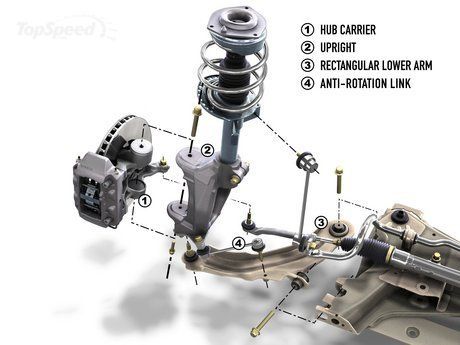sqrtminus1
Materials
A new type of struts: Renault PerfoHub, Ford RevoKnuckle, or GM HiperStrut look as a promising innovation solving torque steer problems in FWD cars, as well as reducing bump steer with both FRD and RWD.
It works by adding an independent steering axis.
The only major disadvantage - a bit of extra unsprung weight.
Can this system replace the conventional McPherson struts in most cars (not only high power ones)?
It works by adding an independent steering axis.
The only major disadvantage - a bit of extra unsprung weight.
Can this system replace the conventional McPherson struts in most cars (not only high power ones)?

![[smile] [smile] [smile]](/data/assets/smilies/smile.gif)




